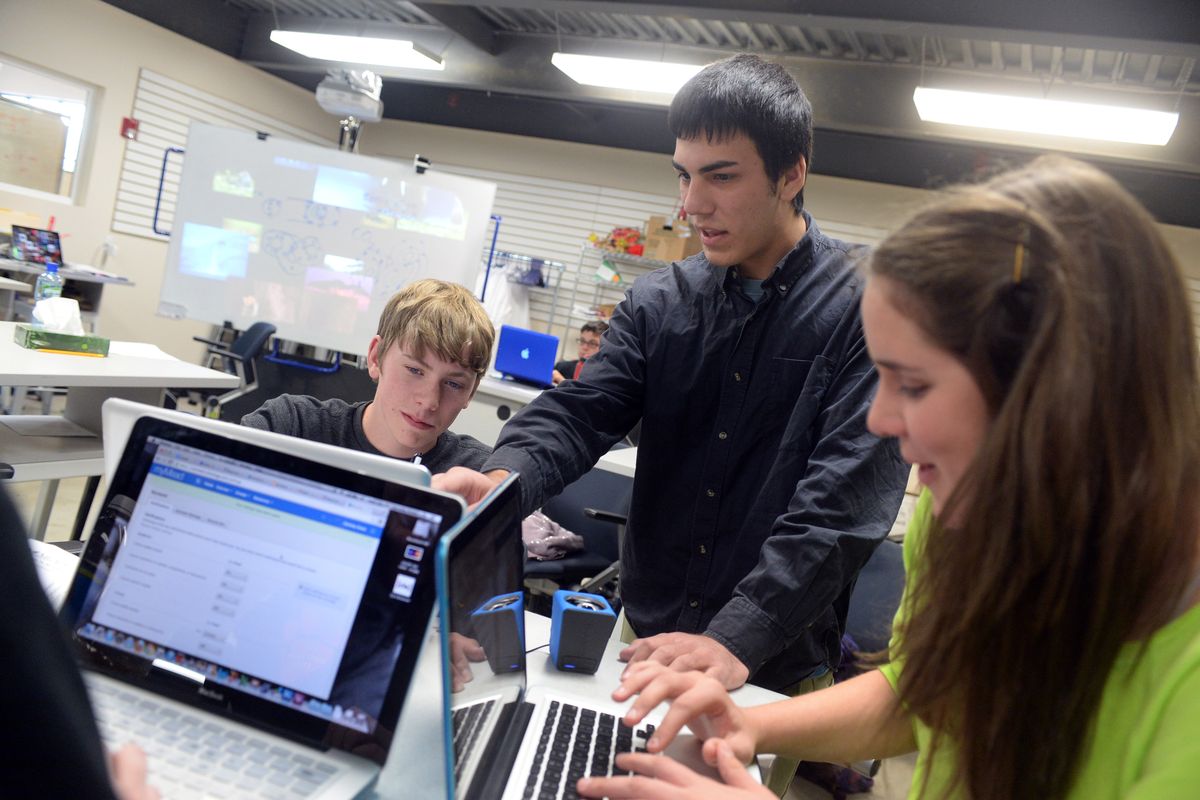Mead School District’s Riverpoint Academy looks to build endowment

Mead School District’s Riverpoint Academy can be described in one word: unconventional.
That applies to the students, the classes, the equipment and, soon, a funding source.
The year-old STEM (science, technology, engineering and mathematics) school needs more teaching tools, so Riverpoint’s co-founder is working to build an endowment, one pizza dinner at time.
“I can’t go to the (school) district and ask for money to buy technology we can’t put in all the schools,” said Dan Butler, director of STEM for the Mead School District. “I’m just trying to look at the lumps in the road and figure out how to get around them.”
Butler’s goal is to raise about $1.5 million in five years and use the interest to buy equipment. On the current wish list is computer-aided drafting software, a textile fabrication station, supplies for 3-D printers, a DNA copier and 10 electrophoresis machines, which are used to separate DNA.
Right now, Riverpoint borrows scientific equipment from Washington State University Spokane, and students work in an anatomy and physiology lab at Whitworth University each week, said Sarah Pooler, the school’s bioengineering teacher.
“We have great partners,” she said, but the school would like to have its own equipment.
Riverpoint teacher Matt Green said the school wants to make it easy for students to act on their ideas. For example, if a student comes up with a skateboard design, educators want the tools to be able to make a version of it.
“We in the education world have separated our kids’ heads from their hands,” Green said. “I think that does a disservice to kids. We believe the heads and the hands should go together.”
Riverpoint uses project-based learning techniques, which combine hands-on experiences, community interaction and classroom instruction. Classes are loosely structured and focused on the four core areas. Other subjects, such as English and writing, are incorporated into the primary courses. Students often work in groups, and exams are often in the form of oral presentations or exhibits.
The school’s 126 students, who are all juniors and seniors, can earn college credit at the academy. No student who wants to attend is rejected, so there’s a broad mix.
The school spent its first year on the Riverpoint higher education campus in downtown Spokane. It relocated this summer to the former Roundy’s retail store on the Newport Highway. The 15,000-square-foot building is mostly open space with a few rooms and offices dividing the front and the back.
Most school districts have foundations that raise money for schools, but it’s rare for a single school to have an endowment.
Rep. Kevin Parker and Spokane entrepreneur Tyler Lafferty hosted a recent fundraiser for Riverpoint during which attendees donated $30,000.
“It’s a STEM school, and I like it because it’s a complementary school, not a duplicate of any of other schools in the region,” Parker said. It also “catches students at both ends: the gifted and those who might have dropped out.”
He adds, “The endowment pays for nothing that the district is already paying for.”
Students spoke during the fundraising event about how the school has changed their academic experience.
“I have ADHD, and sitting in six periods was hard for me,” said Ashlyn Bocook, 17. The teen tried various study techniques but struggled in her classes. Her dream is to play softball in college, so failing in school is not an option. During her first year at Riverpoint, she earned a 4.0 grade-point average. She’s thriving this year, too.
“The whole environment is welcoming,” Bocook said. “For once, I’m standing out. Here I feel smart.”